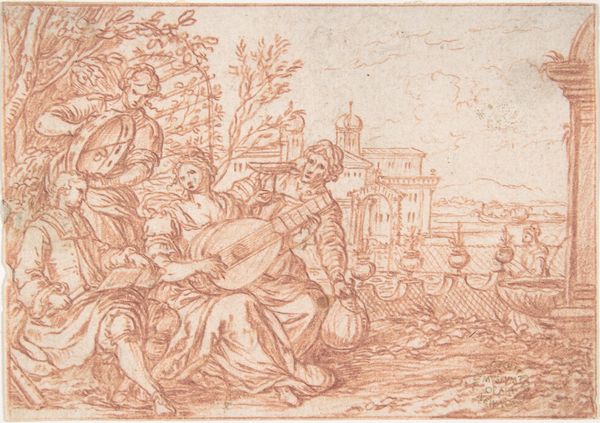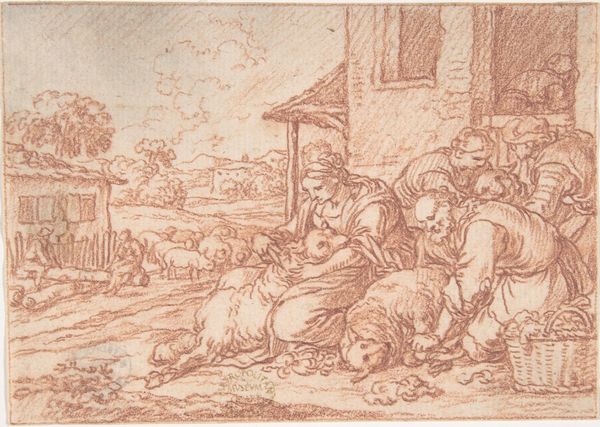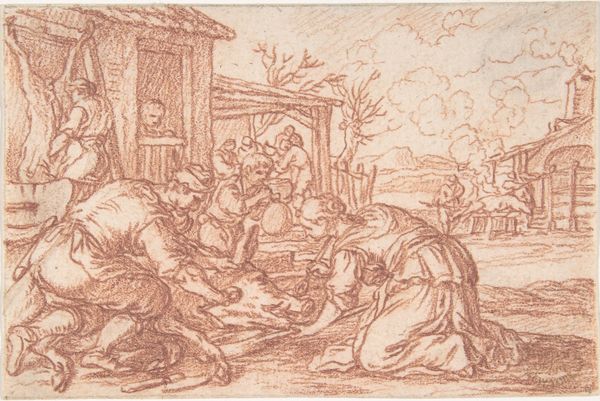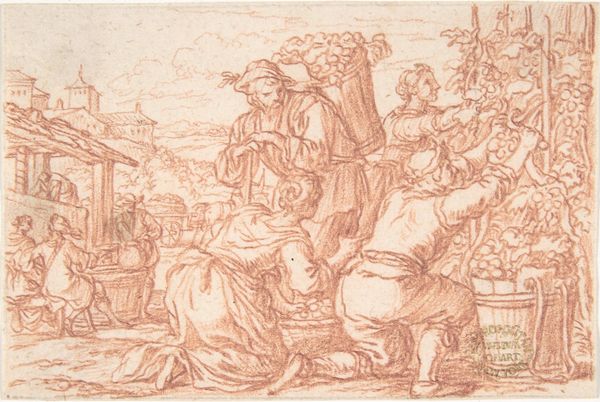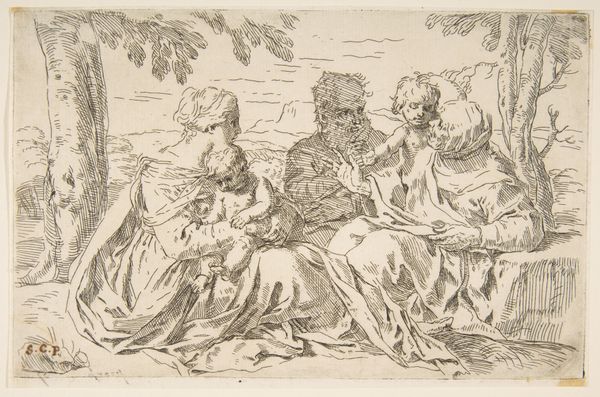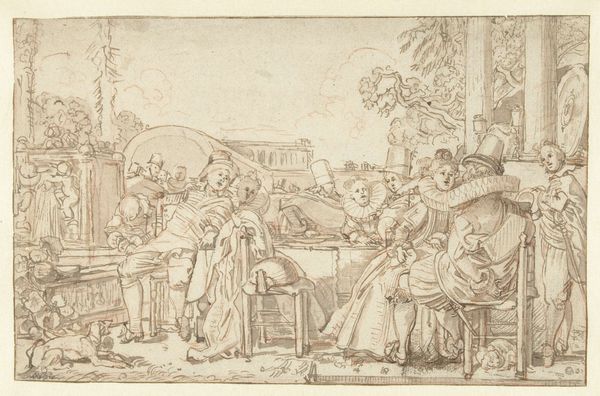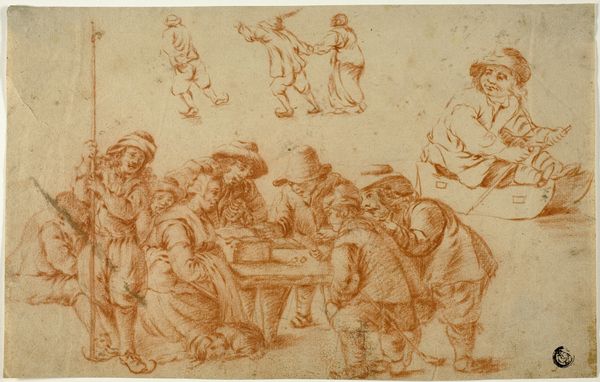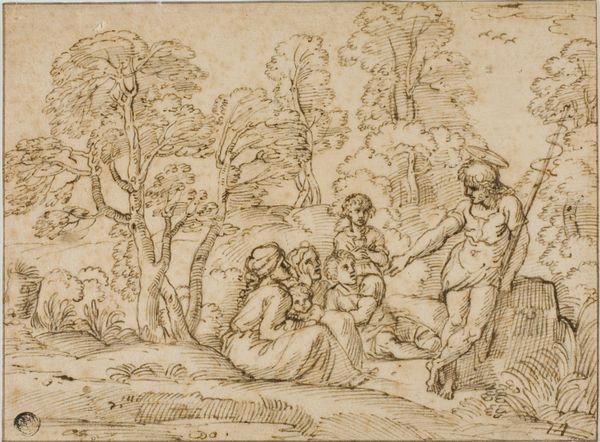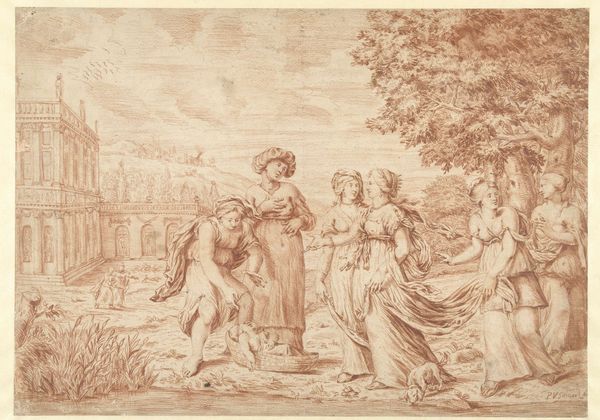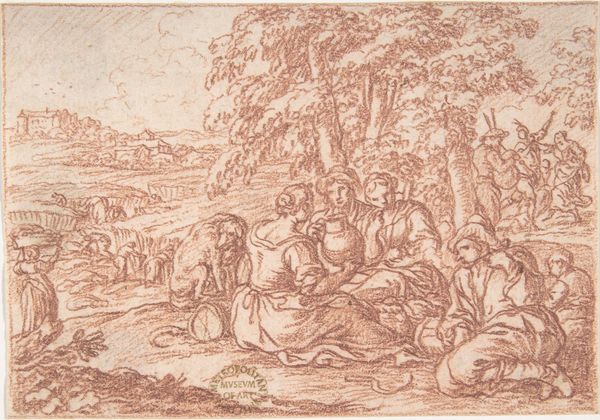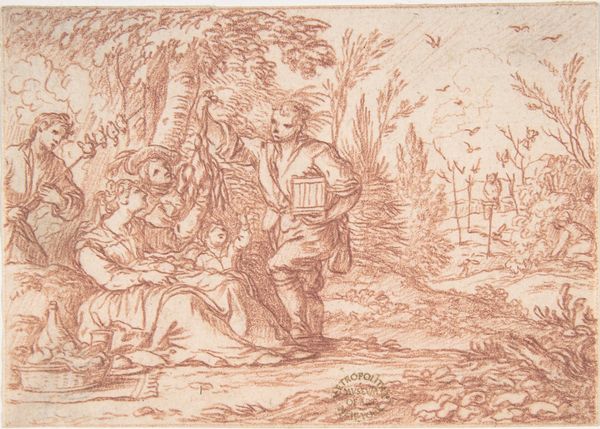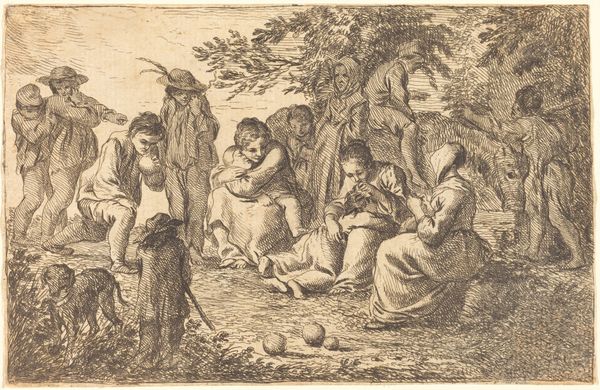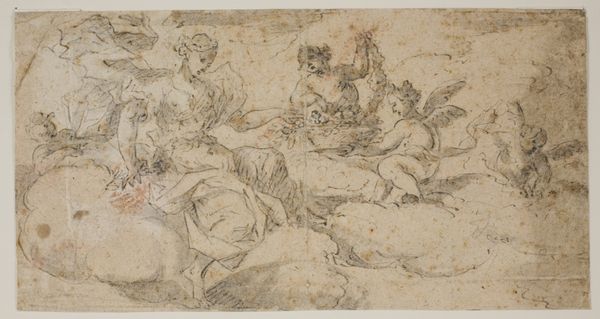
April (one of a series representing the labors of the months) 1690
0:00
0:00
drawing, etching
#
drawing
#
baroque
#
etching
#
landscape
#
genre-painting
#
northern-renaissance
Dimensions: 3 5/16 x 4 3/4 in. (8.4 x 12.1 cm)
Copyright: Public Domain
Editor: Here we have Jonas Umbach's "April," created around 1690. It's a red chalk drawing with etching that shows people gathering, seemingly celebrating the spring. I'm struck by the depiction of leisure—everyone seems to be engaged in such gentle activities. How do you interpret this work? Curator: The "leisure" you identify can be complicated, especially considering the socio-economic context of 17th-century Europe. While the elite enjoyed moments of supposed pastoral bliss, such imagery often obscured the realities of labor and the stark class divisions inherent in genre painting. Consider the figures in the background—they are burdened and laboring. Do you see a connection? Editor: I hadn’t really noticed the figures in the background. The foreground really drew my attention... It does feel a bit like two worlds colliding. Is Umbach commenting on these societal differences through this juxtaposition? Curator: It’s definitely something to consider. Representations like these reinforce an idealized, perhaps even propagandistic, view of rural life, especially for the wealthy patrons who would have originally viewed it. Think about the politics of representation, of who gets to be seen and how. Does this image romanticize rural life at the expense of acknowledging the realities of labor? Editor: That’s a fascinating point. It makes me rethink the seemingly innocent scene, now knowing the background details serve as a critical component to the whole story, providing a crucial context. Curator: Precisely! And by examining these layers of meaning, we begin to unpack the complex narratives embedded within even the most seemingly idyllic artworks. We need to constantly ask who is visible and who is rendered invisible and why. Editor: Thanks, I’ll definitely look at art with more historical context moving forward.
Comments
No comments
Be the first to comment and join the conversation on the ultimate creative platform.
